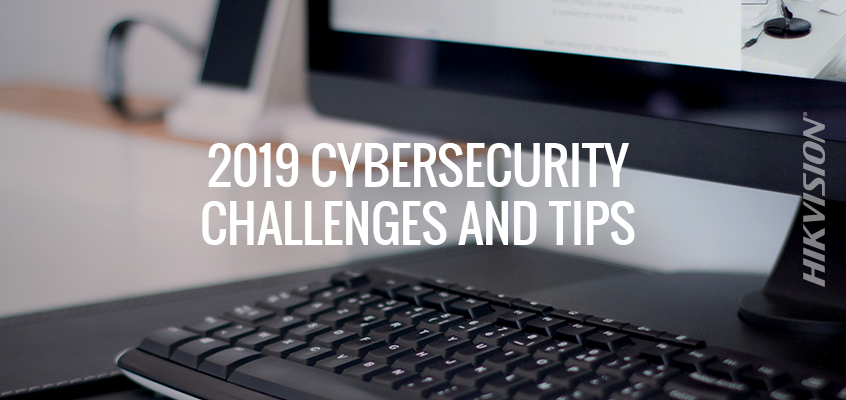2019 Cybersecurity Challenges and Tips to Mitigate Them
Hikvision Offers Tips to Avoid Phishing Attempts, Malware, and Improve Cybersecurity
In “Threats to Look Out for in 2019,” Security magazine provides a list of 2019 cyber threats to watch out for, and tips for organizations to remain cyber secure and avoid being hacked.
From the article: “This year [2018] was laden with cybersecurity challenges pertaining to 'opportunistic attackers' and attempts to compromise individuals’ computers for credentials and financial information harvesting. In 2019, new technologies and channels will come to market, opening up additional threat vectors for hackers to explore and attack."
Phishing will continue to be a primary cyberattack method, and although the article states it is not a novel hacking attempt, it has “become more sophisticated over time and can appear to come from one’s bank, asking them to verify bank information after a recent trip, or an email that appears to be from one’s supervisor asking them to download and sign an important company-wide document.”
The author provides these insights to avoid becoming a victim of phishing:
- Be cautious of email links before clicking. In a recent HikWire blog, Hikvision’s cybersecurity director discussed hovering over URLs before clicking on the links to ensure they actually go to the website indicated.
- If the link seems suspicious, go directly to the company’s website instead of clicking the link in the email.
Another 2019 threat is the re-use of passwords. Since many people use the same passwords for multiple site logins, hackers will take stolen user credentials and attempt to access people’s online accounts. To mitigate this threat, the article recommends implementation of a “cloud-based single sign-on with two-factor authentication for your personal and company websites and databases” to improve user experience and eliminate password re-use.
Document attacks will re-emerge as a threat in 2019: “A typical attack involves either attaching documents to an email (that contain malicious content) or getting users to click on a linked document resulting in a download. Either way, the hacker’s goal is to get an individual to download a random “executable,” disguised as a normal document. The reason this technique remains dominant amongst hackers is because it relies on something technology cannot fix–innate human curiosity,” according the article. Vigilance in updating Adobe Acrobat and Microsoft Office programs can help to safeguard computers from this type of hack.
Click here for more about 2019 cyber hack threats from the article.
Hikvision has penned numerous blogs with cybersecurity tips and insights, including the “Top Seven Tips to Avoid Becoming a Phishing Victim” in its Phishing blog series part two.
In the blog, Hikvision’s director of cybersecurity, Chuck Davis, said the following: “Phishing has long been an effective way for attackers to trick people into divulging sensitive information or infecting a system with malware. Malware can give an attacker remote access to protected systems and networks, encrypt a user’s data and charge a ransom to decrypt the data, or use that system as part of an attack against other systems. A critical part of malware defense is identifying a phishing attack.”
Click here for more cybersecurity insights from Hikvision.

